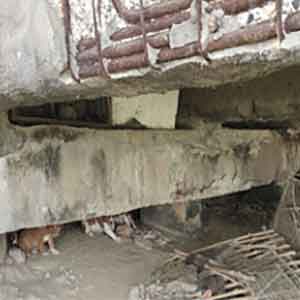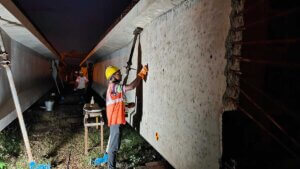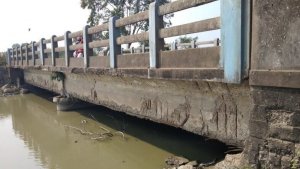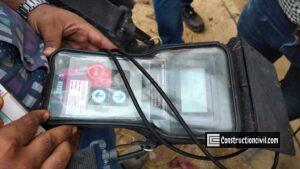Adequacy of inspection of bridges relies upon the exact recording of the actual data. When the observation is made, data will be recorded. Notwithstanding recording defects or damages, their nonattendance will likewise be recorded. On the off chance that any recently noted defects have been rectified, the equivalent will be recorded. The inspection will follow a pre-decided example to guarantee that no component is ignored.
Inspection of Bridges Sequence:
Following the inspection pattern shall be followed during a complete inspection of bridges.
- Inspection of waterway structure
- Inspection of bridges foundation
- Inspection of bridges substructure
- Inspection of bridges superstructure
- Inspection of Pre-stressing material (for pre-stressed bridge)
- Inspection of bridges bearings
- Wearing coat inspection
- Concrete crash barrier/railing conditions survey
- Inspection of bridges expansion joints
- Inspection of bridges drainage spout and down Take pipe
- Inspection of other components of the structure
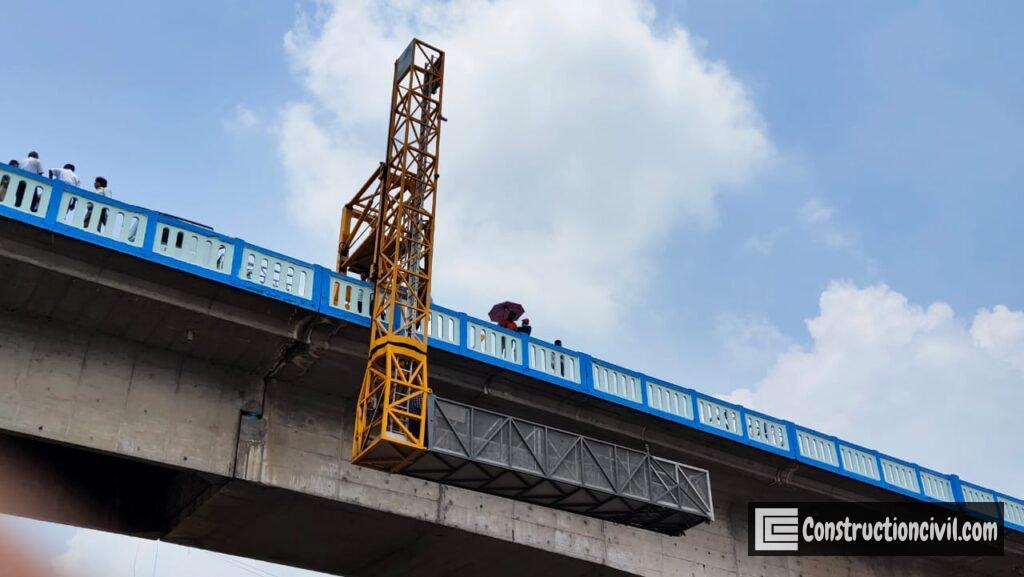
Also, Read: Maintenance of Bridges – General Planning & procedure
Inspection of Bridges:
The details of the bridge inspection of various items are described below.
Inspection of Waterway Structure:
The reviewing officials will examine the waterway under the bridge during each monsoon and the floods and will get ready report considering the followings.
- The maximum flood level seen during the year will be marked on the piers and will be compared with the design flood level.
- The maximum watched afflux will be recorded from D/S and U/S watermarks on piers.
- The maximum scour level will be recorded.
- If there is any strange difference in the flow pattern
- Any waterway impediments like island arrangement, vegetation development, etc., will be recorded.
- Erosion of bank, pitching if any, will be noted during monsoon.
Inspection of Bridges Foundation:
- If there is any settlement should be recorded, and survey points also will be marked at every pier so that these will be accessible from survey stations in the reasonable interim.
- For the correct measurement, such reading will be taken by the auto level when vehicular traffic is negligible. These readings will be crosscheck with the records to evaluate if any settlement has occurred.
Also, Read: Elastomeric Bridge Bearing – Advantages & Limitations
Inspection of Bridges Substructure :
Deterioration of Concrete:
During the inspection of bridges, if there are cracks, impact damage, honeycomb, spalling of concrete, and efflorescence should be appropriately recorded.
- Condition of RCC abutments, piers, Pier cap, pedestal etc., should be thoroughly checked for damages because of impact, cracks, honeycomb surface, and spalling of concrete.
- Concrete deterioration will be checked, especially at construction joints and pier cap areas.
- Damage from impact from boats, vessels, gliding logs or trees and so forth will be checked consistently, and the fundamental measures will be taken to maintain a strategic distance from such impact.
- Everything will be recorded and assessed to decide its impact on the structure and the work required to reestablish the loss of structural integrity.
- The in-situ quality of concrete will be estimated by the Schmidt Hammer test and ultrasonic test to determine the structural capacity of the area.
Exposed Reinforcement and Rust Staining:
- During the bridge substructure inspection, any uncovered reinforcement and its condition, for example, corrosion, breaking and so forth, will be recorded, and the cause behind it will be brought up.
- Besides those mentioned above, any impression of rust on the concrete surface because of improper cover will be estimated by a cover Meter, and the Half Cell Potential Meter test will evaluate corrosion.
Wet Spots and Vegetation Growth:
- The substructure’s wet spot and vegetation growth will be recorded for each span, and reasons for leakage will likewise be identified and informed to a higher authority for consideration.
- During monsoon, water leakage from the expansion joint will be checked as concrete surface and reinforcement are influenced because of leakage of water.
- Inspection of bridges substructure
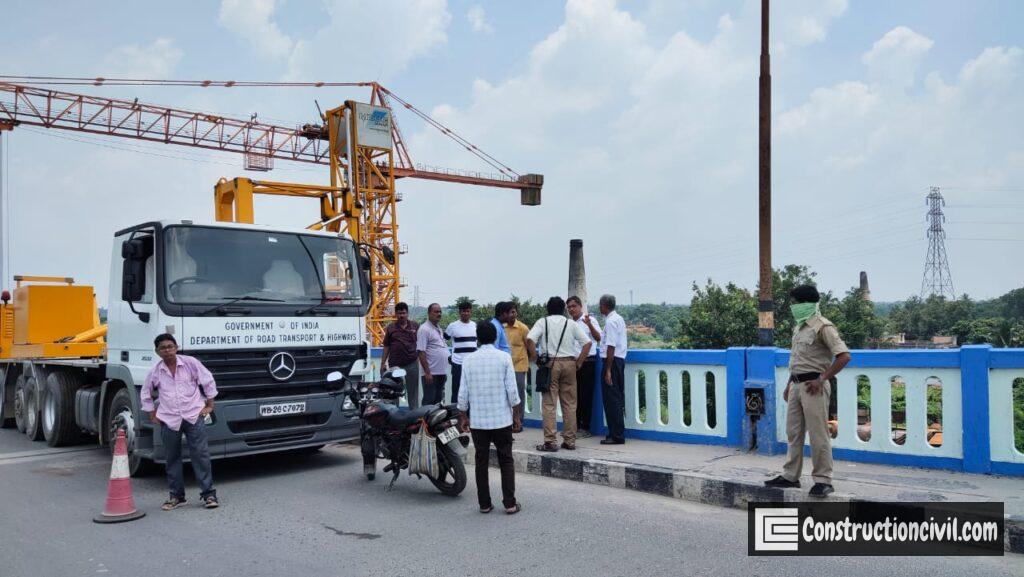
Also, Read: Bridge Inspection Types – Objectives and Guidelines
Inspection of Bridges Superstructure:
Deterioration of Concrete:
- The concrete girder, deck, diaphragms, and anchorage location, will be checked for cracking, leaching, scaling, potholing, spalling and other proof of disintegration.
- The top surface of the wearing coat will be observed minutely to analyze the chance of defects in the deck section. The region where deck disintegrating is suspected may require expulsion of surfacing for detailed inspection.
- The inspection will likewise be made for deflections of the cantilever projecting slab from the web of the box-girder.
- Hairline and fine cracks are hard to identify on a dry concrete surface, so the inspection method should incorporate saturating the concrete surface with water.
Superstructure Deflection:
- The deflection of the superstructure for complete traffic loading conditions will be visually inspected if there is any variation. Permanent survey points will be marked on the median side crash barrier and reviewed periodically to find the deflection of the superstructure with live load and without live load conditions.
- Excessive deflection/vibration of the bridge deck influences the safe movement of traffic and design velocity. On the off chance that any abnormal occasion happens, this will be estimated by instruments with complete traffic conditions and without traffic conditions, and these will be checked with the design value as referenced in the design.
Exposed Reinforcement and Rust Staining:
- During the bridge superstructure inspection, any uncovered reinforcement and its condition, for example, corrosion, breaking and so forth, will be recorded, and the cause behind it will be brought up.
- Rust in the concrete surface happens because of inappropriate cover, assessed by cover meter, and half Cell Potential meter will determine corrosion.
Deficiencies for Segmental Construction:
- Joints between segments for the segmental bridge are compared to weak and may distress due to frequent fluctuation of stress, and cracks, spalling of concrete, broken edges, wet spots, exposed reinforcement, gaps etc., may occur in these joints.
- The above defects will be appropriately recorded inside and outside the box during the inspection. It helps to assess the cause of defects.
- There might be spalling of concrete adjacent to a matching cast joint.
- Repairs to keys made during construction include epoxy mortar patches, which have relaxed or spalled.
- Water leaking through the deck into the interior of the box girder. Dampness or formation of lime deposits or coatings on the underside of the deck is an indication of spillage.
- Perhaps present cracked joints, for example, cracking of the cast-in-place closer joints between superstructure segments of the bridge unit. As non-shrink concrete was utilized for these joints, they ought to likewise be checked to avoid water infiltration.
Wet Spots and Vegetation Growth:
The wet spot and vegetation growth of the bridge superstructure will be recorded for each span, and reasons for leakage will likewise be identified and notified to the higher authority for their consideration. Concrete surfaces and reinforcement are adversely affected because of leakage of water.
Also, Read: Nondestructive Testing of Concrete – Methods & Guidelines
Inspection of Pre-stressing Material :
Pre-stressing Steel:
- Each pre-stressing steel will be checked for its condition, voids in the grout, corrosion in the stand, and force in strand during live load and without live load.
- The condition of each cable will intermittently be checked and surveyed by the particular organization as a test premise.
- Voids in grout, corrosion, excessive loss of force in cable and causes behind it will likewise be ascertained. The Impact-Echo method is applied to recognize the nature of grouts within the ducts.
- Geo-radar is a reasonable method for the confirmation of the location of internal tendons within the deck/web/bottom part of the box. Vibration testing is a proficient strategy used to determine the measure of force existing in outside tendons.
- Chances of corrosion will be checked by the Half Cell Potential meter.
- Besides the abovementioned, cracks on HDPE pipe, cracks in sealing compound, condition of grout cap and wellbeing of joints of sheathing for outer cables will visually be checked, and any defects will be informed to the higher authority.
Anchorage:
- Anchorages without grout caps will be checked for slip and distortion of anchorage.
- Cracks in the anchor cone and the surrounding concrete surface will be checked.
- Corrosion in anchorage must be checked and recorded.
- The actual time of distress will likewise be recorded to find out the reason for distress and its remedial measure.
- If grout caps are not given over the anchorage, the condition of grout caps and cracks/damage in the surrounding concrete surface will be checked, and these will be tended to for the healing measure.
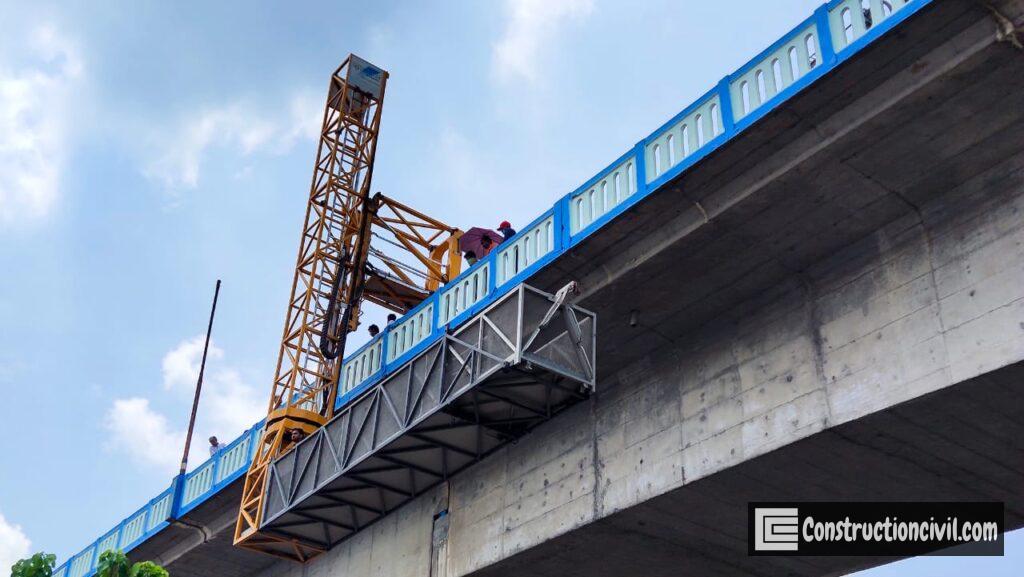
Also, Read: Rusting of Iron Rebar in Concrete – Special Repairing
Inspection of Bridges Bearings:
Disc bearing/POT-PTFE:
Bearings will be inspected once a year during temperature boundaries and after unordinary earthquakes or entry of excessive traffic, loads to examine any displacement in position or change in utilitarian behaviour and cleanliness of parts. The following components and activities will be inspected to monitor and upkeep:
- Measurement of movement
- Measurement of dimensions
- Evidence of the locked-in condition
- Evidence of corrosion
- Coordination of adjacent bridge structure
Elastomeric Bearing:
The elastomeric bearings shall be inspected to ascertain the following:
- The deterioration like oxidation, creep, lead, flattening, bulging, splitting, etc., which results in the formation of cracks, spelling, etc., of the pads shall be inspected.
- The cleanliness of the bearing and its surroundings, mainly to keep away from contact with oil, petroleum etc., will be checked.
- While inspecting a bearing pad, the inspector should likewise note any spalling of concrete or mortar in the proximity of the bearing.
Wearing Coat Inspection :
The condition of the bituminous wearing course will be checked once every month. The inspecting officer will report the following.
- The presence of any potholes, cracks, revealing, depressions and disintegration of road surfacing ought to be checked and recorded.
- Evaluation of riding quality.
- Reviewing the actual thickness periodically against the designed thickness.
Concrete Crash Barrier/Railing Conditions Survey:
- The Concrete Crash Barrier will be inspected for damages, cracks, spalling of concrete and deterioration.
- Any damage to the crash barrier resulting from the hitting of vehicles is to be recorded.
- Exposed reinforcement because of damage or spalling of the concrete ought to be checked. Often rust strains on the concrete are indicative of corrosive activity on the steel inside the concrete and will be noted.
- During the inspection operation, the gap between adjacent concrete crash barriers at the expansion joint location will be measured to monitor the movement of the expansion joint and the end rotational alignment associated with the location.
Also, Read: Causes, Prevention and Repair of Concrete Surface Defects
Inspection of Bridges Expansion Joints:
The inspection engineer ought to be familiar with the pertinent drawings for its components, capacities and fixing details and so on, so any watched deviation can be thought about in like manner. The inspecting Engineer will cover the following points:
- Whether the joints are functioning correctly and whether the transverse grooves stare clean or filled up with debris.
- Condition of strip seal, check for splitting, cracking, oxidation, etc.
- The rattling of the expansion joint under traffic conditions should be checked.
- Condition of mild steel angles etc., will be checked for any corrosion.
- Sliding Plates will be checked at the location of the crash barrier joints.
Inspection of Bridges Drainage Spout and Down Take Pipe:
- The drainage spouts will be checked for damage.
- The projection of the drainage spouts will be checked to understand that the basic parts are not affected.
- The drainage spouts will be cleaned monthly during monsoon, more frequently on water stagnation.
Inspection of other components of the structure:
The dust will be cleaned according to standards for maintaining the appropriate camber and riding surface. The median’s dust and garbage/plastics will be cleaned inconsistently, particularly in the monsoon. The cleaning of dust will helps appropriate drainage of water. Thus, dust deposition will be recorded over wearing coat, mainly at the sides. Erosion at the inlet/outlet of pipe will be checked regularly, especially during monsoon.
Photographs related to repair/Rehabilitation of existing Bridges:
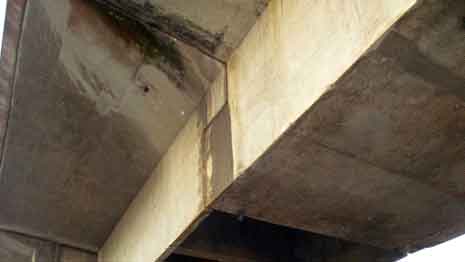
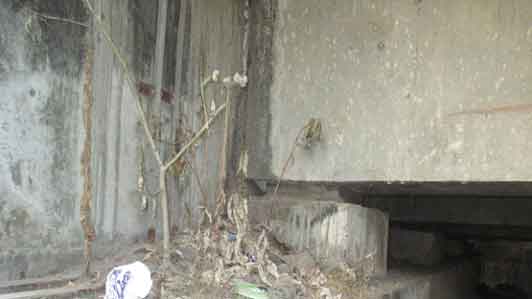
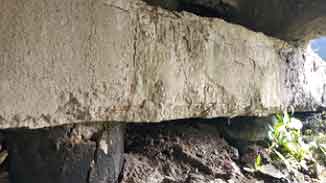

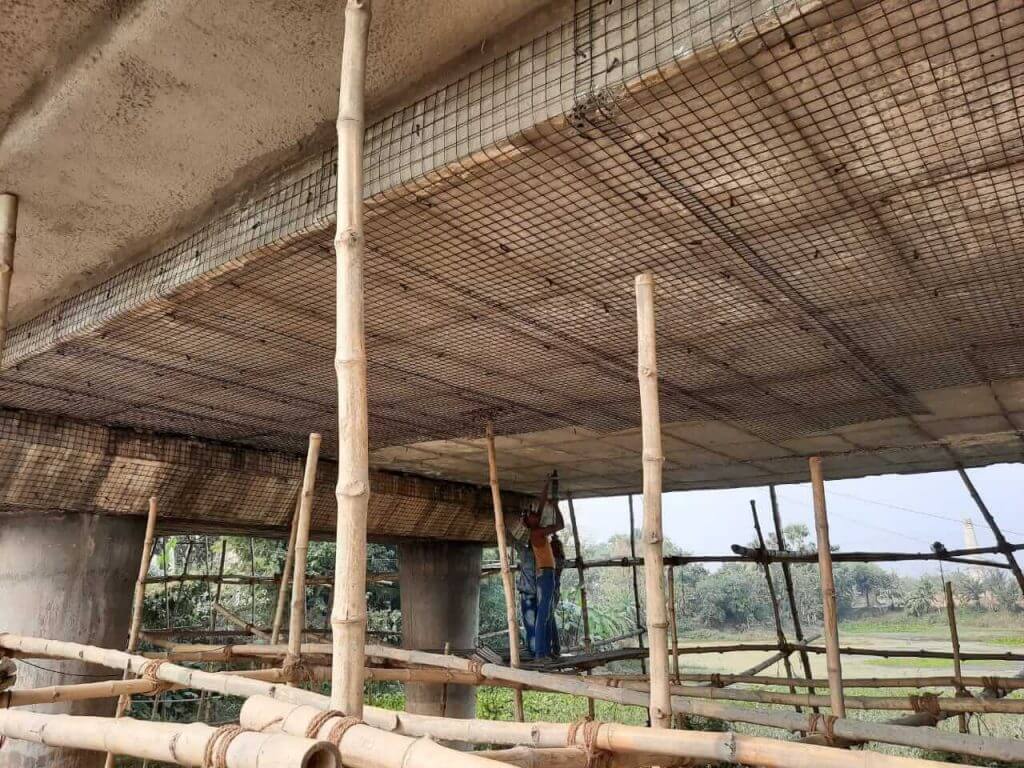
Also, Read: Blowholes/Surface voids/Bugholes in Concrete Surface
